New products at Crocus
by Sarah - July 31st, 2009.Filed under: Crocus, New Products.
New items at Crocus
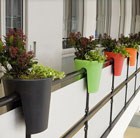
balcony-pot-green £39.99
Our new funky balcony pot is made out of 100% weatherproof resin and comes in 6 great colours. The pot is split in a 'U' shape so it can sit tightly on the balcony without any worry of it falling once it is planted. This is a great great addition to your balcony which can be filled with some beautiful plants to give your balcony the wow factor!Size – 29.5cm High x 30cm DiameterThe size of the 'U' Shape in the middle of the pot: Width – 6cm narrow, Length 22cm.

balcony-pot-white £39.99
Our new funky balcony pot is made out of 100% weatherproof resin and comes in 6 great colours. The pot is split in a 'U' shape so it can sit tightly on the balcony without any worry of it falling once it is planted. This is a great great addition to your balcony which can be filled with some beautiful plants to give your balcony the wow factor!Size – 29.5cm High x 30cm DiameterThe size of the 'U' Shape in the middle of the pot: Width – 6cm narrow, Length 22cm.
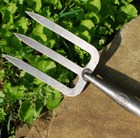
de-wit-small-fork-with-long-t-handle £24.99
This is a light weight little fork made from Boron steel with an ash 'T' handle. It is good for working between your flowerbeds, vegetables and plants in borders. Easy to carry and light in use.Size – 910 x 110 x 170mmThe Dutch are rightly regarded as makers of the finest gardening tools. The two best are Sneeboer and de Wit. Sneeboer were founded in 1913, but De Wit dates back to1898. The 4th generation of De Wits now run the business; one is a trained wood turner, the other trained as a blacksmith. Both Sneeboer and De Wit use traditional techniques, but different materials. Sneeboer use stainless steel and de Wit use carbon steel. Carbon Steel is naturally tougher than Stainless steel and is not prone to metal fatigue like Stainless Steel.De Wit burnish their steel. This not only helps to protect it for longer but gives it a patina that blackens it – just like traditional English tools from the Edwardian era.All De Wit tools have turned hardwood handles of oiled Ash. Ash is not only very strong but resists shock better than woods like oak or beech, which is why it is always used for Axe handles.The result is a beautiful tool to hold in the hand but rugged and durable.They feel so natural to use that they are like an extension of theperson that uses them. These tools will give you a lifetime of use, until you hand them on.
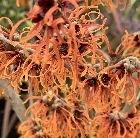
witch hazel £19.99
Position: full sun or partial shadeSoil: moderately fertile, moist, well-drained neutral to acid soilRate of growth: slow-growingFlowering period: January to FebruaryHardiness: fully hardyIn winter, this vase-shaped, deciduous shrub has clusters of sweetly scented, fiery orange flowers clinging to bare twigs. In autumn, the bright green leaves turn spectacular shades of yellow, orange and red. The tiered branches of this award-winning variety of witch hazel contrast well with the vertical stems of dogwood. A lovely specimen plant for a sunny winter border or woodland edge, where its perfume can be appreciated. The flowering twigs can be cut to perfume rooms in winter.Garden care: In early spring remove any misplaced, crossing or diseased branches and apply a generous 5-7cm (2-3in) mulch of well-rotted compost or manure around the base of the plant.
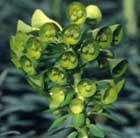
Euphorbia £9.99
Position: full sunSoil: light, well-drained garden soilRate of growth: fast growingFlowering period: March to MayFlower colour: chartreuse-greenOther features: fleshy grey-green leavesHardiness: fully hardy This handsome, architectural plant works well in contemporary minimalist gardens, traditional herbaceous borders and exposed coastal sites. It's easy to understand why the acclaimed Edwardian garden designer Gertrude Jekyll, described it as 'one of the grandest of plants'. Its upright stems are clothed with fleshy grey-green leaves and topped with huge clusters of chartreuse-green spring flowers. Garden care: In autumn cut back the faded flower stems, avoiding new ones. When working with spurges always wear gloves since the milky sap is poisonous and a potential skin irritant. Remove unwanted seedlings each spring as part of routine border maintenance.
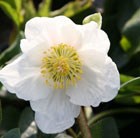
hellebore £7.99
Position: partial shadeSoil: heavy, neutral to alkaline soilRate of growth: average Flowering period: February to April Flower colour: white, sometimes with a pink edgeOther features: all parts of the plant cause severe discomfort if ingested; the sap may cause skin irritationHardiness: fully hardyPretty, pendent, saucer-shaped flowers are held above leathery, deep green leaves from late winter to early spring. Lenten rose make an attractive ground cover in dappled shade under deciduous trees and shrubs. Plant them in heavy, neutral to alkaline soil.Garden care: Add lots of well-rotted leaf mould or organic matter to the planting hole. Apply a generous 5-7cm (2-3in) mulch of well-rotted organic matter around the base of the plant in autumn and provide a top-dressing of general fertiliser each spring.
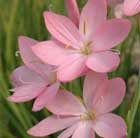
kaffir lily £5.99
Position: full sunSoil: moderately fertile, moist but well-drained soilRate of growth: fast-growing Flowering period: August and September Flower colour: pale pinkOther features: excellent cut-flowersHardiness: hardy although flowerspikes are vulnerable to frost damageStiff, upright stems of pale pink, gladiolus-like flowers in August and September above clumps of sword-shaped, mid-green leaves. This pale pink kaffir lily is excellent for the middle of a sheltered sunny, moist but well-drained border. Earlier-flowering than many other varieties, it provides vertical interest and a supply of cut-flowers for use indoors.Garden care: Apply lots of well-rotted garden compost or manure when planting. Water during dry spells and dead-head regularly. After flowering remove the faded flower-spikes and protect the crown of the plant with a deep, dry winter mulch. Lift and divide congested plants every two or three years in spring.
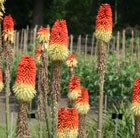
red hot poker £5.99
Position: full sun or partial shadeSoil: fertile, humus-rich, moist, well-drained soilRate of growth: average Flowering period: August and SeptemberHardiness: fully hardyTall bright and imposing, kniphofias lend height, vibrancy and drama to any garden. This variety produces tall spikes of red flower buds that open to orange and fade to yellow above clumps of evergreen, strap-like leaves. Originally from South Africa, the fiery, torch-like flowers of this kniphofia make vertical accents in a sunny border and work particularly well in a planting scheme based on 'hot' colours. They also look great against a background of ornamental grasses. This is an easy and undemanding plant. Garden care: In autumn remove and compost the faded flower spikes and apply a deep dry mulch such as pine needles around the crown of the plant. Cut back to the ground in spring to keep the foliage fresh-looking. Divide and re-plant overcrowded colonies in spring.






